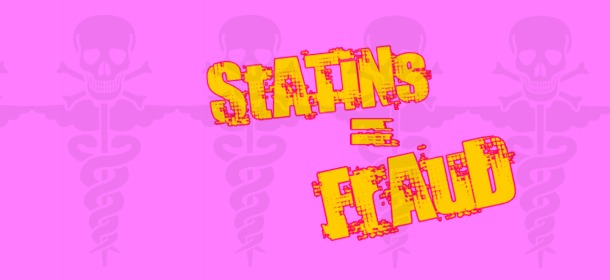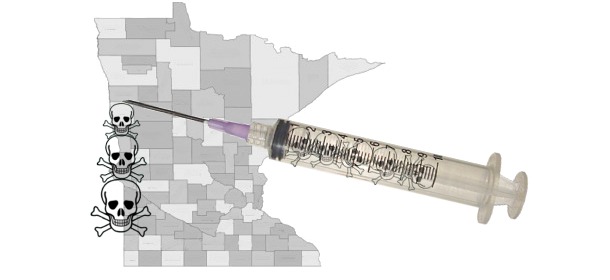In a shocking betrayal of any semblance of scientific legitimacy, the pseudo science publishing group, Elsevier, has retracted the seminal Séralini study that clearly documents severe toxicity of Roundup (glyphosate). It’s worse than their publication of 6 faked journals. Can there be a more craven act on the part of a journal publisher?
by the Institute of Science in Society
Original Title: Retracting Séralini Study Violates Science and Ethics
Giles-Eric Séralini, a professor of molecular biology at Caen University, led a toxicological study on GM maize and Roundup herbicide involving 200 rats over a period of two years; it found an alarming increase in early death, large tumours including cancers, and diseases of the liver and kidney. The study, published in 2012 by the journal Food and Chemical Toxicology (FCT) [1], was by no means the first, nor the only one to show adverse health impacts from GM feed or Roundup herbicide (see [2] GM Cancer Warning Can No Longer Be Ignored, SiS 56; and ISIS report [3] Ban GMOs Now for a comprehensive review on the health and environmental hazards of GMOs). It was the latest warning – perhaps the most dramatic – and the most in-depth long-term toxicological study ever done. Significantly, many of the most damaging effects came after 90 days, the officially mandated period of feeding trials for regulatory approval of GMOs.
What followed was a concerted worldwide campaign to discredit the findings, including the appointment of ex-Monsanto scientist Richard Goodman to the newly created post of associate editor for biotechnology at FCT [4]. Soon after Goodman’s appointment, a study by researchers in Brazil also finding potentially harmful effects from GMOs was withdrawn from FCT, but reappeared almost immediately in another journal.
On 27 November 2013, FCT editor Wallace Hayes wrote to Séralini’s team requesting them to retract their paper published just over a year ago on grounds that it was “inconclusive”, not because there was fraud or errors [5]. In fact, the paper was published after peer review by 5 referees – the usual number being 2 or 3 – and the criticisms post-publication answered in full by the team, and appeared in the same journal [6].
The substantive criticisms boil down to two: the Sprague-Dawley strain of laboratory rats used is inappropriate, as it is prone to cancer, and the number of animals for testing cancer is too small. In fact, the study was explicitly aimed not at cancer but at toxicity, for which Sprague-Dawley is the strain most commonly used; and the number of animals, 10 in each group, was in accordance with the OECD guidelines.
The reason the OECD protocol specifies larger groups for cancer testing than for toxicity is that cancer is less common and takes longer to become apparent and is therefore more likely to be missed, i.e. the aim is to avoid a false negative. The fact that excess tumours and cancer was detected even in 10 animals is arguably all the more significant, and may be due to the strong carcinogenic potential of the agents tested (see [7] Excess Cancers and Deaths with GM Feed: the Stats Stand Up, SiS 56). Even though the study was not designed to test for cancer, it would have been totally irresponsible for Séralini and his group not to report what they had found. Equally it is important for the article to remain in the public record for its implications on public health.
As Séralini’s team pointed out, the retraction of their paper is a violation of the international ethical norms as prescribed by COPE (Committee on Publication Ethics) accepted by FCT, as it had been most thoroughly reviewed, and by the clear admission of the FCT editor, absolutely no fraud or error was perpetrated [5]. In contrast, a study published by Monsanto in the same journal in 2004 does contain errors if not outright fraud, basically because the effect of GMOs was not compared with matched isogenic non-GMO controls, while the feed for controls was most likely contaminated with GMOs. That paper should be considered for retraction, but the issue was never even raised.
A day later, a press release was put out by a PR company entitled, “Elsevier announces article retraction from journal Food and Chemical Toxicology” [8], making it clear that the decision came from the highest level, the publishing giant that describes itself as “a global company employing more than 7,000 people in 24 countries,” and “partner with a global community of 7,000 journal editors” [9].
Elsevier is already notorious for having published 6 fake journals sponsored by unnamed pharmaceutical companies made to look like peer reviewed medical journals [10]. It is also the target of a still current boycott initiated by eminent mathematician, Sir Tim Gowers FRS, as a protest by academics against the business practices of Elsevier, especially the high prices it charges for journals and books [11]. So far, 13 974 people from all subjects have signed and pledged they will not publish, referee, or do editorial work with Elsevier [12].
Séralini’s team is standing firm against the retraction, and would resort to legal measures against the journal to protect their rights [5].
The journal and its publisher are operating a double standard in retracting a paper reporting adverse health impacts for which no fraud or error was found, as opposed to one claiming no health impacts where serious error at least is involved. This is not just a blatant violation of publishing ethics, it means conspiring to remove from the public record results that could be of great importance for public health. Furthermore, it is an abuse of science and amounts to corporate terrorism on independent science and scientists. It strikes at the very heart of science and democracy, and the aspiration of scientists to work for the public good.
That is why a group of scientists have drafted an open letter requesting a reversal of the retraction and a fulsome public apology to the authors. Until this is done, we will boycott Elsevier, decline to purchase Elsevier products, submit papers for publication, review papers or do editorial work for Elsevier [13] Open Letter on Retraction & Pledge to Boycott Elsevier. The letter is open for signing by both scientists and non-scientists. Please sign on and forward as widely as possible.
Sources
1. Séralini G-E, Clair E, Mesnage R, Gress S, Defarge N, Malatesta M, Hennequin D, de Vendômois J-S. Long term toxicity of a Roundup herbicide and a Roundup-tolerant genetically modified maize. Food and Chemical Toxicology published online September 2012. http://dx.doi.org/10.1016/j.fct.2012.08.005
2. Saunders PT and Ho MW. GM cancer warning can no longer be ignored. Science in Society 56, 2-4, 2012.
3. Ho MW and Sirinathsinghji E. Ban GMOs Now, ISIS, 2013, http://www.i-sis.org.uk/Ban_GMOs_Now_-_Special_ISIS_Report.php
4. “Journal retraction of Seralini study is illicit, unscientific, and unethical”. Claire Robinson, GMWatch, 27 November 2013,
5. “FCT requests the retraction of Prof Seralini’study”, Frédérique Baudouin, CRIIGEN, 29 November 2013,
6. Séralini G-E, Clair E, Mesnage R, Gress S, Defarge N, Malatesta M, Hennequin D, de Vendômois J-S. Answers to critics: why there is a long term toxicity due to NK603 Roundup-tolerant genetically modi?ed maize and to a Roundup herbicide. Food and Chem. Tox. 2013, 53, 461-8.
7. Saunders PT. Excess cancers and death, the stats stand up. Science in Society 56, 4-5, 2013.
8. “Elsevier announces article retraction from journal Food and Chemical Toxicology”, PRNewswire, 28 November 2013,
9. At a glance. Elsevier, accessed 2 December 2013, http://www.elsevier.com/about/at-a-glance
10. “Elsevier published 6 fake journals”, Bob Grant, TheScientist, 7 May 2009,
11. “Elsevier boycott gathers pace”, John Whitfield, Nature news, 9 February 2012,
12. The cost of knowledge, 13970 researchers taking a stand, accessed 2 December 2013, http://thecostofknowledge.com/
13. Open letter on retraction & pledge to boycott Elsevier. Science in Society 61 (to appear).
Tagged elsevier retracts gmo study, elsevier retracts séralini study, genetic engineering, glyphosate, glyphosate study retracted, gmo, gmo study retracted, pseudo-science, publisher retracts glyphosate study, publisher retracts gmo study, publisher retracts roundup study, roundup, roundup study retracted, science, séralini, séralini study, séralini study retracted
 by Heidi Stevenson
by Heidi Stevenson Vaccine-choice advocates have been pointing out that vaccination has not affected mortality rates from other diseases. Dr. Doshi makes exactly the same point about influenza vaccines, and provides a graph that clearly illustrates the point.
Vaccine-choice advocates have been pointing out that vaccination has not affected mortality rates from other diseases. Dr. Doshi makes exactly the same point about influenza vaccines, and provides a graph that clearly illustrates the point. He focuses on the distinction between real influenza and influenza-like illness. People often say that they have “the flu”, when they really don’t. Doctors often diagnose “the flu” when their patients don’t have it.
He focuses on the distinction between real influenza and influenza-like illness. People often say that they have “the flu”, when they really don’t. Doctors often diagnose “the flu” when their patients don’t have it.

 by Heidi Stevenson
by Heidi Stevenson



 by Heidi Stevenson
by Heidi Stevenson




